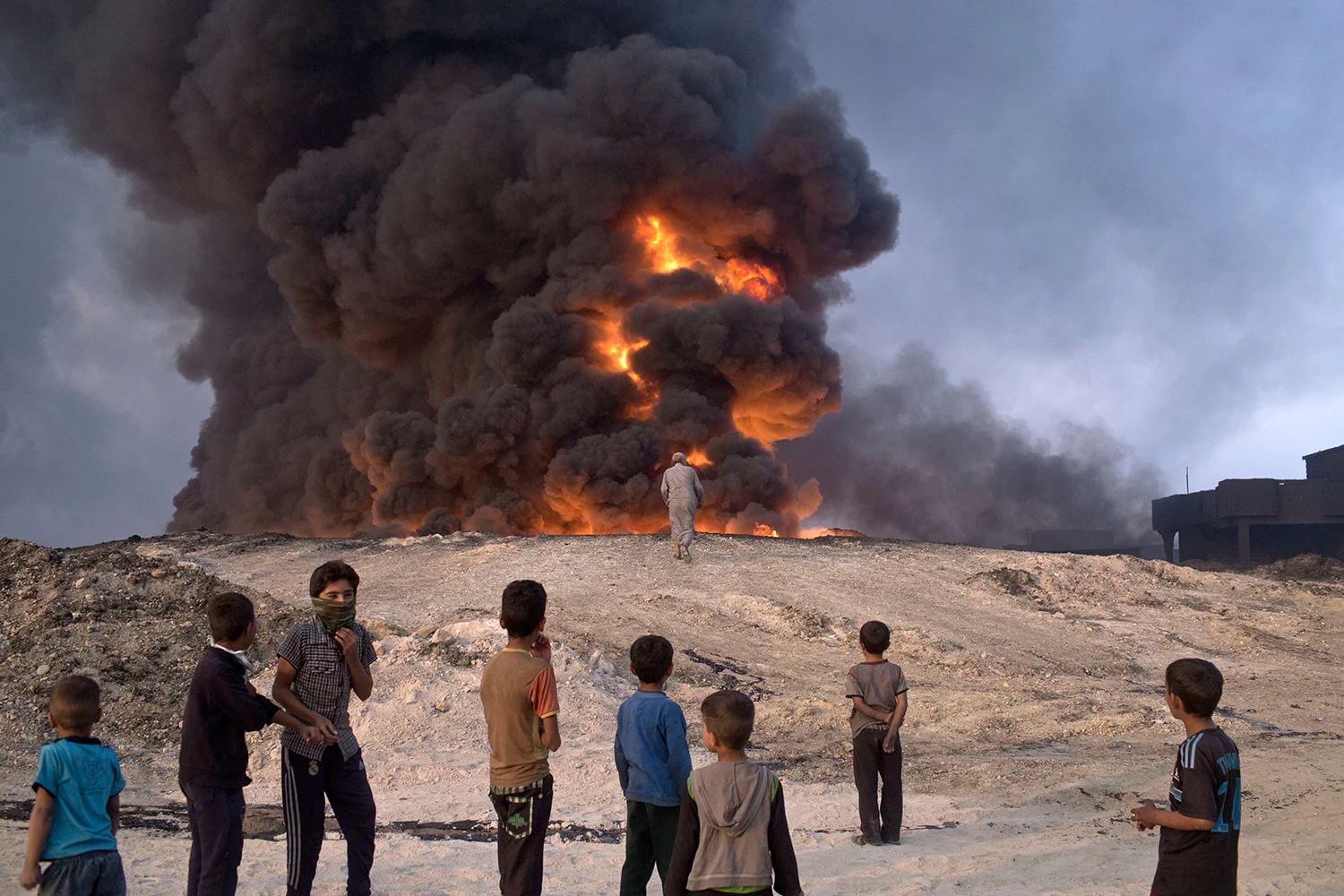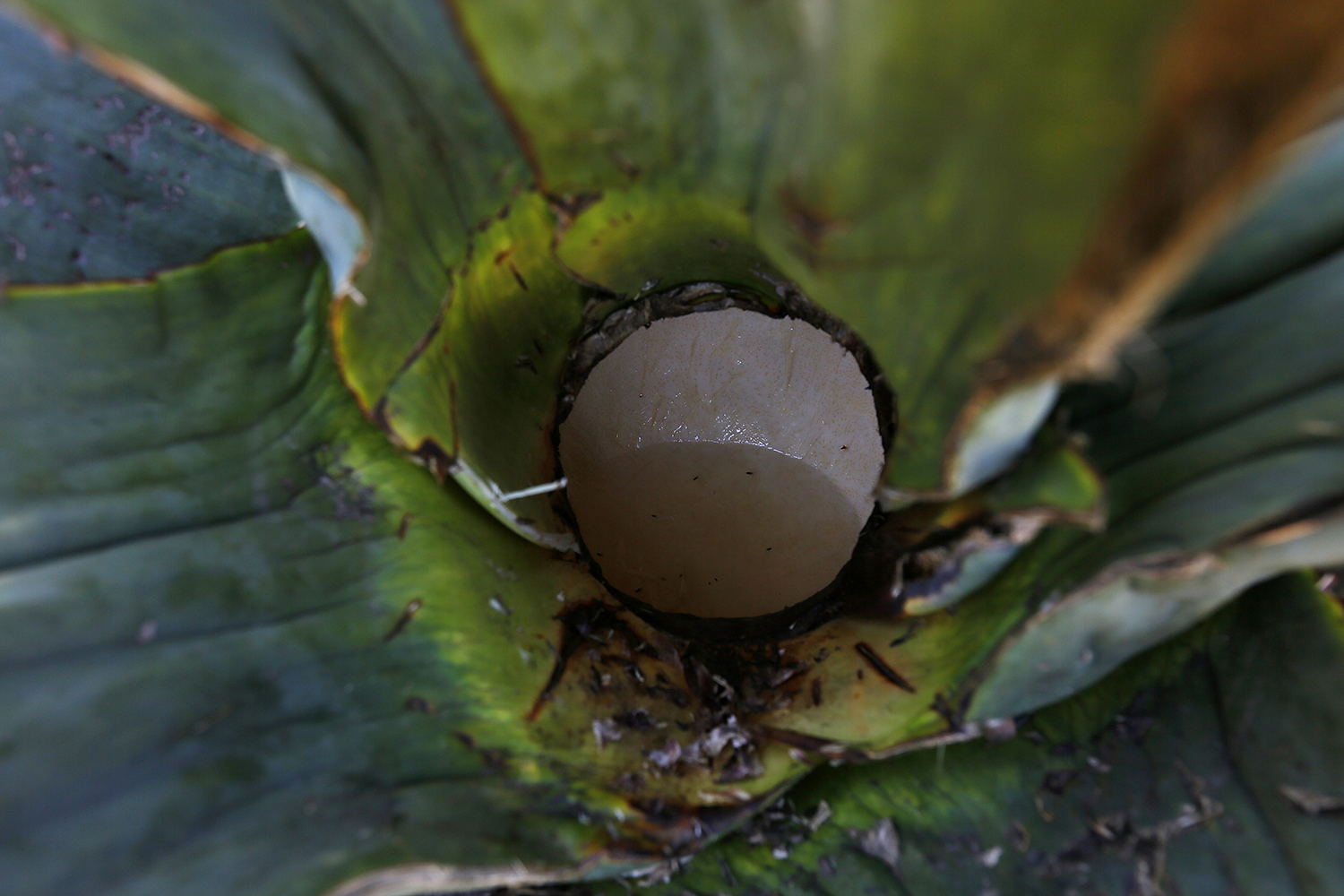A look at key events in Syria's Aleppo since March 2011

The Syrian government's capture of eastern Aleppo, held for more than four years by rebels, marks a horrific new chapter for Syria's largest city. Here's a look at key events in Aleppo since the start of Syria's uprising nearly six years ago:
In this March 23, 2011 photo, anti-Syrian government protesters flash the victory sign as they protest in the southern city of Daraa, Syria. Some activists expressed regret that one year later their "revolution" against President Bashar Assad's rule had become mired in violence. (AP Photo/Hussein Malla)
March 2011: Protests erupt in the southern city of Daraa over the detention of a group of boys accused of painting anti-government graffiti on the walls of their school. On March 18, security forces open fire on a protest in Daraa, killing four people in what activists regard as the first deaths of the uprising. Demonstrations spread, as does the crackdown by President Bashar Assad's forces, eventually igniting a full-scale civil war.
July 2012: Rebel fighters seize eastern Aleppo, dividing the city. The intense fighting that follows, including almost daily barrel bombs dropped on the poorer and more densely populated rebel-held east, causes an estimated 1 million civilians to flee. Another half million are displaced inside the eastern part of the city in the first year of the conflict.
Free Syrian Army fighters run away after attacking a Syrian Army tank during fighting in the Izaa district in Aleppo, Syria, Friday, Sept. 7, 2012. (AP Photo/Manu Brabo)
A Syrian man mourns over the body of his brother, Abdullah Alrayzar, 23, during a funeral for four men killed in a government airstrike in Marea, on the outskirts of Aleppo, Syria, Tuesday, Sept. 11, 2012. (AP Photo/Muhammed Muheisen)
Free Syrian Army soldiers throws a petrol bomb against Syrian Army positions in Saif Al Dawle district in Aleppo, Syria, Wednesday, Oct. 3, 2012. (AP Photo/Manu Brabo)
A Free Syrian Army soldier walks through a street in Amariya district in Aleppo, Syria, Monday, Sept. 10, 2012. (AP Photo/Manu Brabo)
October 2012: The U.N. negotiates a short-lived truce for the whole city during the Muslim Eid al-Adha holiday. Fighting destroys cultural and historic sites, including the Grand Umayyad mosque, which both sides fought to control.
December 2012: Rebels launch an offensive that expands their presence in Aleppo province and secures supply lines to the Turkish border. They seize a number of military and air bases, increasingly isolating government forces. All flights from Aleppo airport are suspended after al-Qaida-linked fighters threaten to shoot down civilian planes.
A Syrian woman stands near fire to warm herself at a refugee camp in Azaz, Syria, Monday, Dec. 17, 2012. Thousands of Syrian refugees who fled their homes due to fighting between Free Syrian Army fighters and government forces, face cold weather as temperatures dropped to 2 degrees Celsius (36 degrees Fahrenheit) in Azaz. (AP Photo/Manu Brabo)
In this Saturday, Dec. 29, 2012 photo, Free Syrian Army fighters fire at enemy positions during heavy clashes with government forces, in the Salaheddine district of Aleppo, Syria. Activists say Syrian rebels have captured an oil pumping station in the north central province of Raqqa about 160 km east of Aleppo after days of fighting. (AP Photo/Abdullah Al-Yasin)
January 2013: Bodies begin washing up on the banks of Aleppo's Queiq River, in the rebel-held Bustan al-Qasr neighborhood. Human Rights Watch says at least 147 bodies were retrieved from the river between January and March. It says the victims were most likely killed in government-controlled areas.
April 2013: Aleppo's ancient Citadel, used by government forces as a base, comes under rebel fire. The government targets the Umayyad mosque minaret, suspecting rebels were using it as a base. Amid the fighting, passageways between the two sides of the divided city emerge, allowing an informal link for residents, but also turning deadly at times, as sniper fire kills many.
August 2013: Insurgents gain control of the Aleppo-Damascus highway, tightening the siege on the government part of the city. Residents of eastern Aleppo take food and vegetables through illicit passageways to their relatives in western Aleppo.
A man points a flashlight towards the body of a Syrian man killed by Syrian army shelling at a graveyard in Aleppo, Syria, Oct. 13, 2012. (AP Photo/Manu Brabo)
A man cries while holding the body of his son, killed by the Syrian Army, near Dar El Shifa hospital in Aleppo, Syria, Oct. 3, 2012. (AP Photo/Manu Brabo)
The body of a Syrian Army soldier lies on the ground after heavy clashes with government forces at a military academy besieged by the rebels in Tal Sheer, Syria, Sunday, Dec. 16, 2012. (AP Photo/Manu Brabo)
A Syrian woman walks past a body in front of Dar El Shifa Hospital, Aleppo, Syria, Wednesday, Oct. 10, 2012. (AP Photo/Manu Brabo)
October 2013: Poor coordination and infighting weaken the rebels' ranks. That winter, Islamic State militants clash with the rebels, establishing a presence in the eastern part of the city.
December 2013: The government begins an unprecedented campaign of dropping barrel bombs on Aleppo city and surrounding areas, driving more people out of eastern Aleppo. IS expands its presence in the eastern part of city.
January 2014: Rebels unite against IS, driving the extremists out of Aleppo city. Government forces exploit the fighting to push the rebels back.
May 2014: Using a new tactic, rebels tunnel beneath a hotel used as a government command and control center and blow it up. The government's barrel bomb campaign on eastern Aleppo intensifies.
A Syrian man carries his sister who was wounded after a government airstrike hit the neighborhood of Ansari, in Aleppo, Syria, Sunday, Feb. 3, 2013. (AP Photo/Abdullah al-Yassin)
In this photo, provided by the anti-government activist group Aleppo Media Center (AMC), which has been authenticated based on its contents and other AP reporting, a Syrian man, right, runs for cover from a Syrian government forces airstrike attack, in Aleppo, Syria, Feb. 27, 2014 . (Aleppo Media Center, AMC, via AP)
March 2015: Insurgents blow up the Air Force Intelligence building in Aleppo after digging a tunnel, a symbolic victory. The newly formed Army of Conquest, which brings together rebels and al-Qaida-linked fighters, seizes Idlib city to the northwest.
October 2015: Russia begins launching airstrikes to bolster Assad's forces. Syrian troops launch an offensive around Aleppo. Iraqi, Lebanese and Iranian militias also throw their weight behind the government, setting the stage for a wider offensive against Aleppo that would continue until the following year.
February 2016: Russia and the U.S. broker a cease-fire that excludes extremists. Signs of normal life return to Aleppo.
April 2016: The cease-fire collapses, bombing resumes, and the Castello road, the only road out of eastern Aleppo, becomes a death trap.
July 2016: The government and allied forces impose a full siege on eastern Aleppo, home to an estimated 250,000 people. Rebel fighters break the siege for a couple of weeks from the southern front, but it is re-imposed by August.
In this March 3, 2016, photo, Syrian solders keep watch on a roof with portraits of Syrian President Bashar Assad in Al-Tall, a town of northern outskirts of Damascus, Syria. A shaky cease-fire in Syria brokered by Moscow and Washington has survived its first week, outlasting expectations and providing a glimmer of hope that a diplomatic solution to the five-year-old war may be possible. (AP Photo/Pavel Golovkin)
In this Tuesday, Oct. 2, 2012 photo, smoke rises over Saif Al Dawla district, in Aleppo, Syria. Russia and the Syrian government will open humanitarian corridors in Syria's embattled city of Aleppo and offer a way out for opposition fighters wanting to lay down their arms, Russia's defense minister Sergei Shoigu announced on Thursday, July 28, 2016. (AP Photo/Manu Brabo)
September 2016: A cease-fire negotiated by Russia and the United States holds for a few days, but talks to bring in aid go nowhere, and an airstrike hits a humanitarian aid convoy north of the city.
October 2016: Russia announces it is suspending its airstrikes on eastern Aleppo and designates humanitarian corridors, urging the rebels and residents to leave the eastern enclave. The rebels reject the offer, no one uses the corridors and the U.N. says it cannot carry out medical evacuations due to security concerns. The government continues its air raids on eastern Aleppo.
November 2016: The government launches a renewed and intensified aerial campaign. In late November, Syrian troops and allied forces launch a major ground offensive, rebel defenses crumble and thousands flee.
A Syrian army soldier places a Syrian national flag during a battle with rebel fighters at the Ramouseh front line, east of Aleppo, Syria, Monday, Dec. 5, 2016. (AP Photo/Hassan Ammar)
Text from AP news story, A look at key events in Syria's Aleppo since March 2011.
See these photos on APImages
Follow AP photographers on Twitter
Written content on this site is not created by the editorial department of AP, unless otherwise noted.





